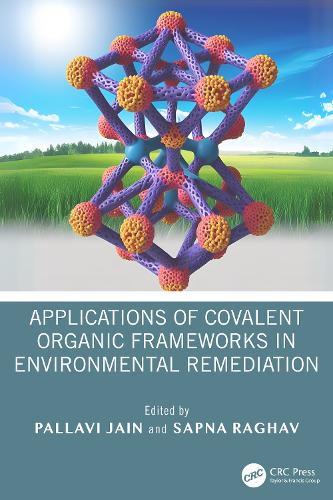Overview
This book provides a comprehensive overview of covalent organic frameworks (COFs) and their growing significance in environmental applications. With their highly ordered, porous structures and tunable properties, COFs offer innovative solutions for challenges such as water purification, air filtration, and pollutant degradation. This book introduces the fundamentals of COF synthesis, structure, and properties while highlighting recent research advances and practical applications. Emphasizing both theoretical insights and real-world relevance, it explores how molecular design and structural engineering can enhance COF performance. This resource is ideal for researchers, students, and professionals focused on sustainable materials and environmental remediation technologies. Features: Highlights the use of COFs in water purification, air filtration, and pollutant degradation. Explores both fundamental mechanisms and practical challenges in environmental applications of COFs. Combines recent research, synthesis methods, and real-world case studies in an accessible format. Serves as a valuable resource for researchers, students, and professionals in environmental and materials science.
Full Product Details
Author: Pallavi Jain (SRM Institute of Science and Technology, India) ,
Sapna Raghav (Shri Jagdishprasad Jhabarmal Tibrewala Univ., Rajasthan) ,
Ma'aruf Abdulmumin Muhammad (Aliko Dangote Univ. of Sci and Tech., Wudil, Nigeria)
Publisher: Taylor & Francis Ltd
Imprint: CRC Press
Weight: 0.760kg
ISBN: 9781032996677
ISBN 10: 1032996676
Pages: 312
Publication Date: 10 November 2025
Audience:
College/higher education
,
Professional and scholarly
,
Tertiary & Higher Education
,
Professional & Vocational
Format: Hardback
Publisher's Status: Active
Availability: Not yet available

This item is yet to be released. You can pre-order this item and we will dispatch it to you upon its release.
Author Information
Pallavi Jain has a distinguished academic and professional career. She currently heads the Student Welfare Department at the SRM Institute of Science and Technology, Delhi-NCR Campus, Modinagar, Ghaziabad, India. She received her Ph.D. in Chemistry from the Banasthali Vidyapith, Rajasthan, India, in 2017. She has approximately 19 years of extensive teaching experience. Her research interest focuses on the development of transition metal complexes incorporating Schiff base ligands for their biological importance in drug delivery, as well as the synthesis of deep eutectic solvents. She has authored and co-authored over 80 publications in reputed international journals and contributed more than 65 book chapters. Her work has been cited more than 1,250 times. She has also edited four books. Sapna Raghav, born in Haryana, India, is an accomplished academic and researcher in the field of Chemistry. She earned her Ph.D. in 2019 from the Department of Chemistry at Banasthali University, Rajasthan. Her primary research interests lie in Environmental and Materials Chemistry, with a focus on water decontamination, sensing technologies, and material science. She has contributed over 25 research articles in reputed international journals. In addition, she has authored more than 50 book chapters with renowned publishers. She has actively participated in numerous national and international conferences and has served as a Women Scientist in Intellectual Property Rights under the DST-TIFAC scheme in New Delhi. She currently holds the position of State Vice President of the Haryana Geographical Indication (GI) Tagging Council under WICCI. With four years of teaching experience, she is presently working as Head of the Department of Chemistry at Shri Jagdishprasad Jhabarmal Tibrewala University, Jhunjhunu, Rajasthan.



